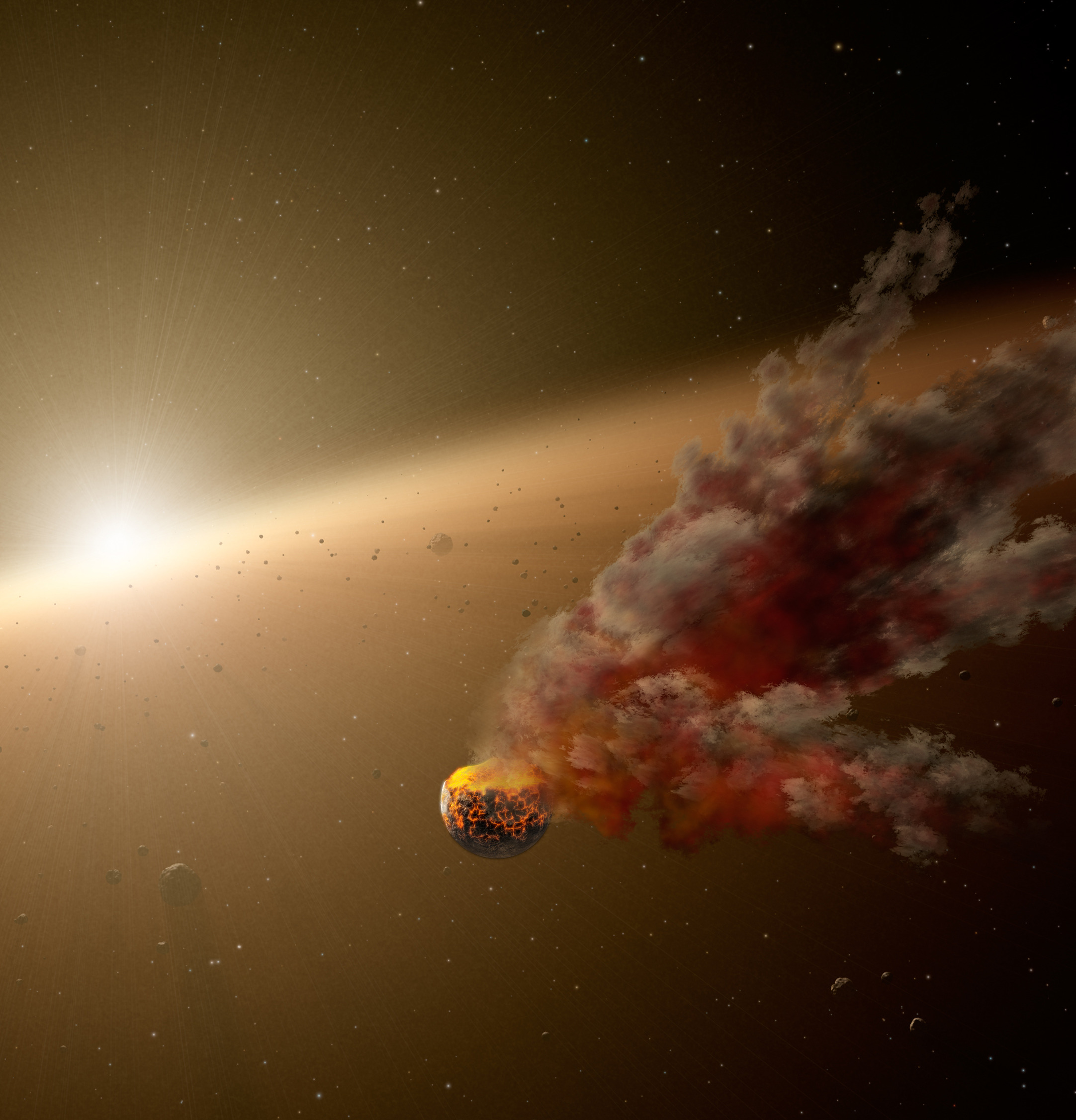Cosmic collision: Asteroid smash-up captured by NASA telescope
Researchers say one of NASA’s space telescopes has tracked an asteroid smash-up before and after the collision for the first time. The Spitzer Space Telescope, which was launched in 2003, spotted an eruption of dust around a young star — the probable result of a collision between large asteroids. While Spitzer has observed suspected asteroid smash-ups before, this marks the first time scientists have been able to collect data before and after a planetary collision.
We think two big asteroids crashed into each other, creating a huge cloud of grains the size of very fine sand, which are now smashing themselves into smithereens and slowly leaking away from the star.
Lead author Huan Meng of the University of Arizona, Tucson
The data will help researchers understand how rocky planets, like Earth, are created. Rocky planets start life off as dusty material rotating around young stars. The material then bunches together to form asteroids that slam into each other. Afterwards, and only in a few instances, do these smashed-up clumps grow and transform into small planets. In about 100 million years, the objects grow into terrestrial planets.
We are watching rocky planet formation happen right in front of us. This is a unique chance to study this process in near real-time.
George Rieke, another co-author of the study

Science asteroid telescope